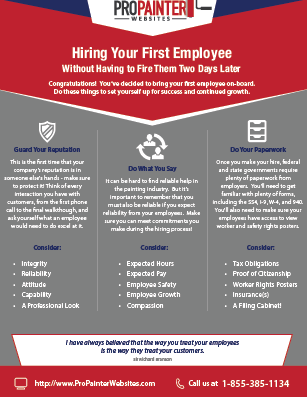Climate'S Effect On Business Outside Paint: Vital Expertise For Success
Climate'S Effect On Business Outside Paint: Vital Expertise For Success
Blog Article
Content Author-Duke Duckworth
When you're intending a business external painting task, do not underestimate the influence of weather condition on your outcomes. You need to think about elements like temperature level, humidity, and precipitation, as they can make or break your paint work. For instance, did you know that optimal problems ask for particular temperature arrays and humidity degrees? Failing to monitor these aspects can bring about uneven finishes or even damages to fresh paint. Comprehending these aspects is essential to achieving a lasting, specialist outcome. So, what particular weather should you be wary of?
Temperature level Considerations
When it comes to industrial exterior painting, temperature plays a vital role in the result of your task. If you're painting in extreme warmth, the paint can dry out also promptly, resulting in issues like inadequate attachment and irregular coatings. You want to go for temperature levels between 50 ° F and 85 ° F for the very best results. Below 50 ° F, paint may not cure appropriately, while above 85 ° F, you take the chance of blistering and breaking.
Timing your project with the right temperature levels is important. Start your job early in the early morning or later on in the mid-day when it's cooler, particularly throughout hot months.
Additionally, consider the surface temperature; it can be considerably higher than the air temperature, especially on warm days. Utilize a surface area thermostat to inspect this prior to you begin.
If temperature levels are unpredictable, keep an eye on the weather forecast. Unexpected temperature drops or heat waves can hinder your strategies. You do not intend to start repainting only to have the conditions alter mid-project.
Humidity Degrees
Humidity degrees dramatically affect the success of your business exterior paint task. When the moisture is too high, it can impede paint drying and curing, causing a series of concerns like bad adhesion and end up high quality.
If https://www.mcall.com/2023/02/15/veterans-home-painting-muschick planning a task throughout wet conditions, you may find that the paint takes longer to dry, which can expand your task timeline and rise prices.
Conversely, reduced humidity can likewise position challenges. Paint may dry out also quickly, preventing proper application and causing an irregular coating.
You'll intend to monitor the moisture levels very closely to guarantee you're working within the excellent array, generally in between 40% and 70%.
To get the most effective outcomes, consider utilizing a hygrometer to determine moisture before starting your project.
If https://interior-house-painters-n09876.csublogs.com/40147803/improve-your-exterior-location-with-imaginative-deck-painting-principles locate the levels are outside the optimum array, you may require to change your schedule or select paints developed for variable problems.
Constantly get in touch with the manufacturer's guidelines for specific recommendations on moisture resistance.
Precipitation Impact
Rain or snow can significantly interrupt your commercial outside paint plans. When precipitation occurs, it can wash away freshly used paint or create an irregular surface. Ideally, you wish to choose days with completely dry weather condition to make certain the paint adheres correctly and cures efficiently. If you're caught in a shower, it's finest to stop the job and wait on conditions to enhance.
Additionally, snow can be even more detrimental. Not just does it produce a wet surface area, but it can also lower temperature levels, making it difficult for paint to completely dry. This can lead to issues like peeling off or blistering down the line.
It's essential to check the weather forecast before starting your job. If rainfall or snow is forecasted, consider rescheduling.
Constantly remember to allow sufficient drying out time between layers, especially if the climate continues to be unforeseeable.
Conclusion
In conclusion, keeping an eye on the weather is necessary for a successful commercial outside painting job. By monitoring temperature, moisture, and rainfall, you can ensure the very best conditions for application and healing. Bear in mind to plan your work around positive climate and always comply with manufacturer standards. With the right technique, you'll attain a lasting, beautiful coating that can hold up against the aspects. Don't allow the climate capture you unsuspecting-- remain educated and paint smart!
